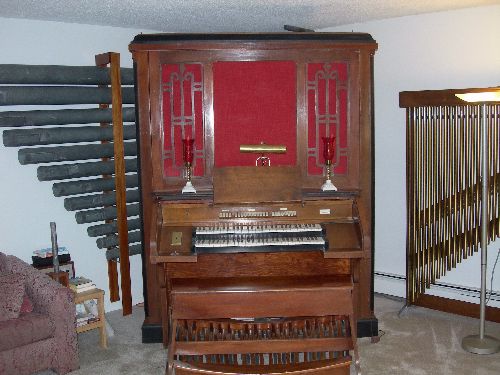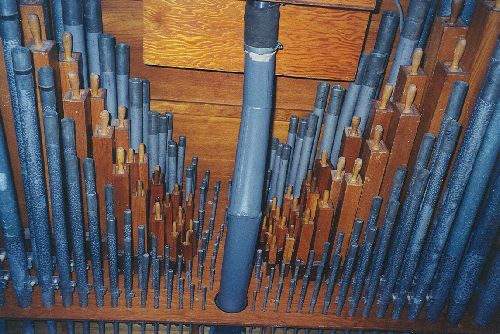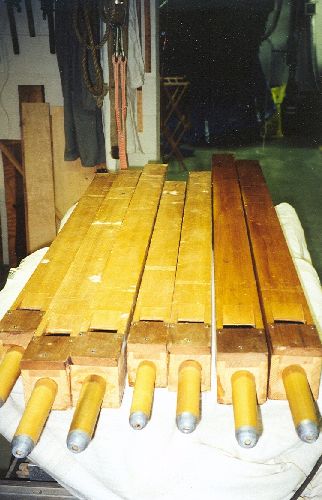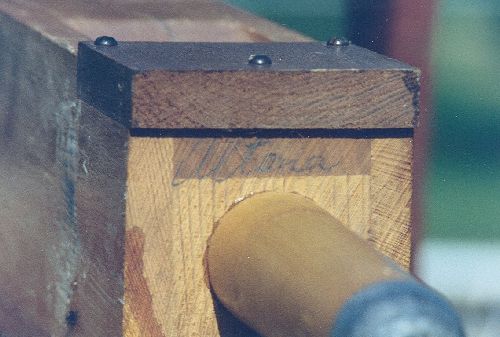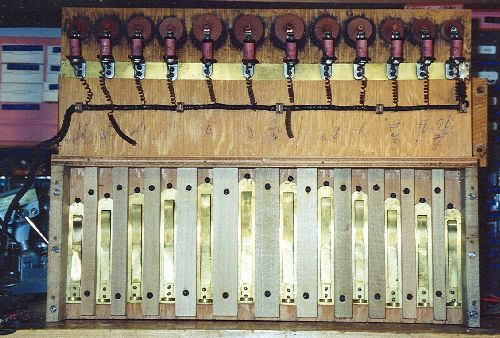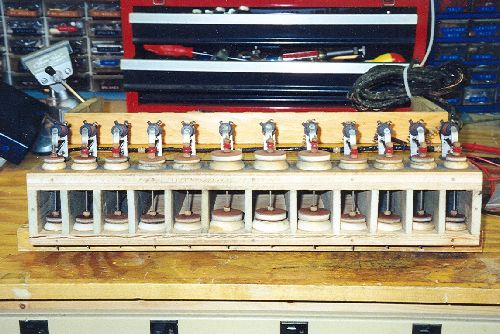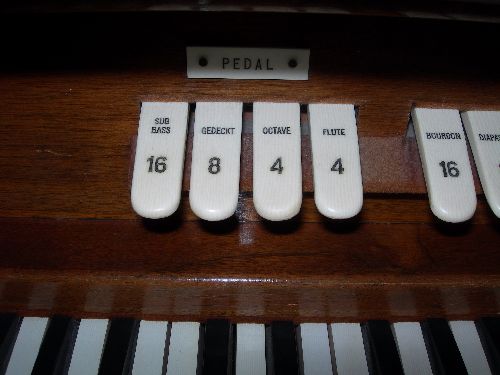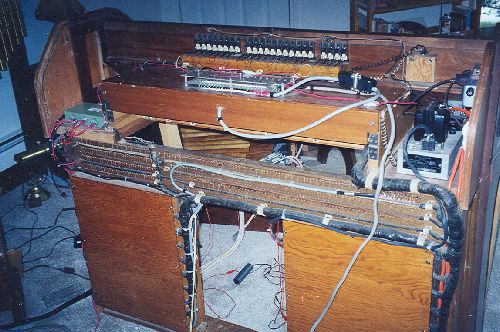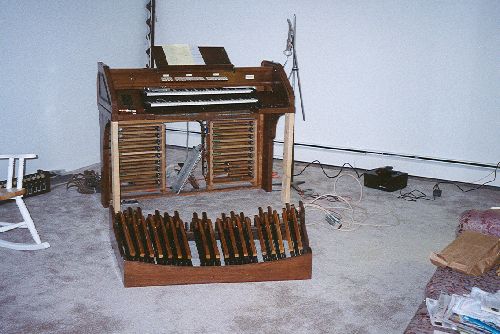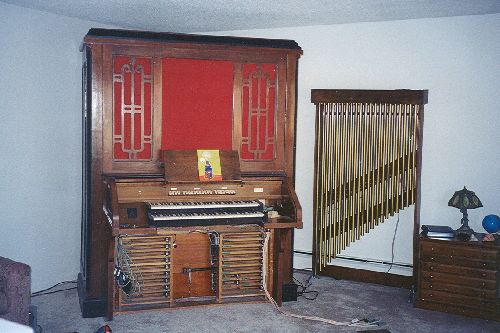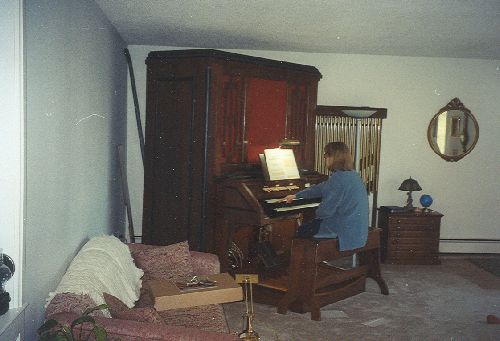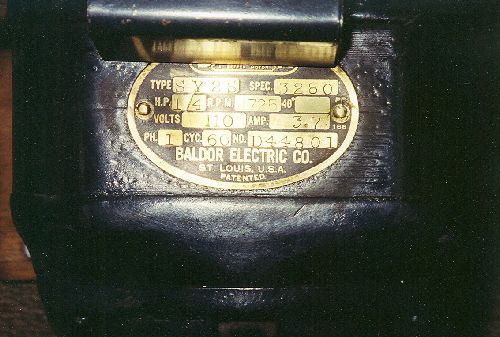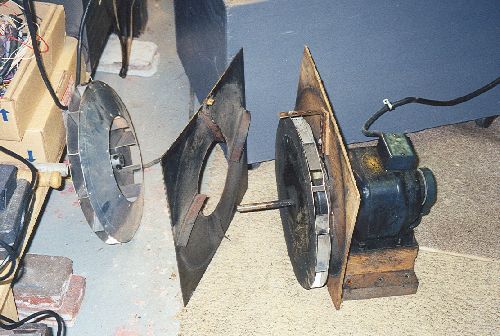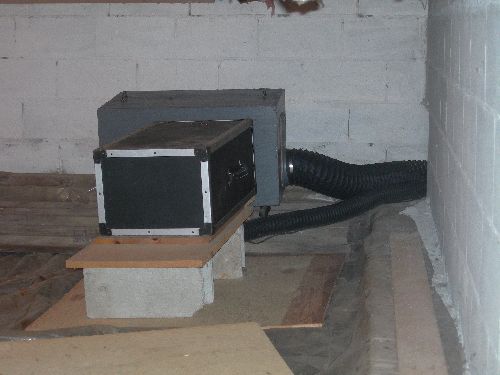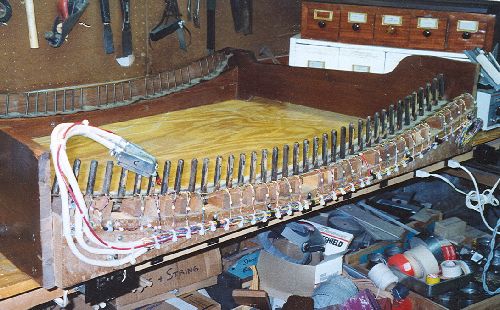Wicks "Fuga" 2/3 Organ Opus 1652
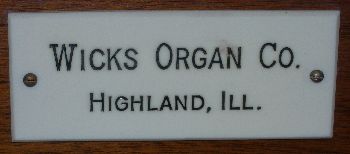
This organ is Wicks op 1652 and was delivered in 1936 to a church in Altona, New York. I acquired it around 1976 and sold it in November 2007. It was fun.
The organ is a 2/3 "Fuga" and the ranks are diapason, string, and flute. Originally the diapason and string were at 4'. The 8' diapason and 8' string stops borrowed the low 12 notes of the 8' flute. I added true 8' diapason and 8' string offsets. I also added Maas chimes (21 tubes). The 16' bourdon stop is handled with 12 free reeds. The flute is at 8'. The wind pressure is 3.5" and it's just right for a home or studio. Wicks intended this design for a practice instrument.
Here is a view of the pipes from the rear with the back removed.
This is a view of the pipes from the front with the swell shades open and the front covering removed. Note the free reed bass box right in the middle.
Some of the flute pipes before refinishing. Note the original destination of the organ on the bottom of the 8' C:
The 16' bass octave is handled by a set of 12 free reeds located in a box in the middle of the organ.
Like most organs of this era every stop is available at every pitch on every
manual! Here's the stop list:
It's quite compact.
It's 67" deep, 90" high, and 70" wide, exclusive of the
offset chests. The diapason offset chest needs about 10' vertical clearance
and the chest is about 6' long. You can see from the picture at the top
of the page that in our current house it was mounted horizontally in a
"gun rack". The 8' string is mitered to fit under an 8' ceiling.
Here's what it looked like in the last house where there was a cathedral ceiling
and the diapason could be vertical. The blower is behind the organ, out of sight.
Here's a view of the rear of the console during assembly. The small green box on the left is the fuse box, the OSI chime relay is in the middle behind the stop controls, and the chime transformer is on the right. The stop switches are on the bottom behind the plywood covers.
The whole instrument comes apart very easily. Here are some views of the assembly.
Up and playing!
The blower is a Wicks "blower in a box" and was in the crawl
space. The windline fed into the bottom of the chest. In the previous
house the blower was in the same room as the organ and it wasn't objectionably
noisy. The tremulent is a dump valve type. There's an electronic control
that varies depth and rate.
Here are some views of the blower rebuild and of the current installation in the crawl space under the organ. The large black box is a muffler for the tremulent.
I rewired the chest and pedal board with telephone wire and connectors.
The PVC wire is considerably safer than the old 1930 Wicks cotton covered
wire and the connectors make it easy to move the organ.. Here are some
views of the pedal board rebuilding. Note the telephone connectors on
the left side of the pedal board.
The chest connectors can be seen in this next photo.
The console now has
individually fused bus circuits so it's a lot safer. There's a 20 amp
Astron power supply. The chime relay is OSI solid state. There's no relay
and each pipe is individually keyed. The stop controls are in the lower
part of the console. It's very simple. The internal console wiring is
the original cotton covered wire.
The swell box is manually operated and there is a crescendo pedal.
At one time I was going to add a glass harp to my home organ. Unfortunately that project never happened for both space and restoration issues. However, it was a pretty neat little device. I think it was from a Kilgen organ but could have been from an Estey. Estey did sometimes thrown in a glass harp to sweeten a deal.
.jpg)
.jpg)
The organ was fun to tinker with but unfortunately it just didn't get played that much. Eventually we decided we needed the space for other things and sold the organ to a church in South Carolina. Here's a photo of the Wicks in the back of a U-haul truck on its way south and the empty corner where it lived for many years. .
